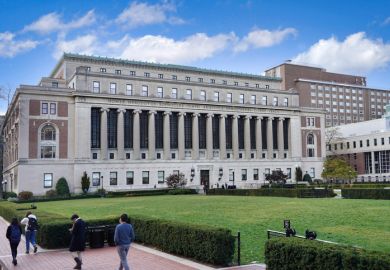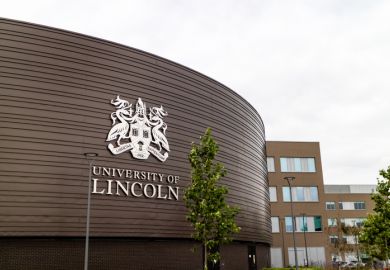Source: Zara Picken
The problem is that more generous maintenance support can appear poor value for money when pitted against other public spending priorities
The red-hot higher education issue of recent years has been tuition fees – hence Labour’s effort to woo those going to the polls today with a pledge to reduce them.
Yet fees do not have to be repaid until after graduation, thanks to tuition fee loans. For disadvantaged students, cash-in-hand maintenance support is more important than the level of fees. Without decent support to help with living costs, students from less well-off backgrounds must work long hours, which disrupts their study, or, even worse, they may decide not to enter higher education at all.
The National Union of Students has made that point loudly and clearly in recent months. It is a welcome change of heart and a campaign that will no doubt be continued by Megan Dunn, the union’s newly elected president. Past NUS leaders have been fair-weather friends of maintenance support. They acquiesced (to put it generously) in Tony Blair’s abolition of maintenance grants in 1998. More recently, they urged the Conservative and Liberal Democrat coalition to hit maintenance rather than fees back in 2010. On the day that MPs voted for £9,000 fees, The Daily Telegraph ran a story with the headline “National Union of Students secretly urged Government to make deep cuts in student grants”.
However welcome and rational the NUS’ current stance is, it may still prove a sticky wicket. Compared with other countries, England has rather generous maintenance support – just look at Australia, whose student finance system is generally considered to be the most similar to England’s.
Australia’s maintenance system is built around Youth Allowance, a means-tested, non-repayable grant that partly resembles the UK’s Jobseeker’s Allowance. In Australia, 180,000 students, less than a fifth of the 1 million home students, receive about £150 a fortnight, or £3,800 a year. Anyone receiving the Youth Allowance also gets a Student Start-Up Scholarship worth about £1,000 a year, bringing the total annual grant to nearly £5,000.
Even accounting for Australia’s higher cost of living, that sum is generous compared with the full grant in England – £3,387 a year (and much more generous than Scotland’s full grant of £1,750). But an English student typically has more cash in hand than an Australian once student loans are factored in. For example, an English undergraduate from a family on £25,000 a year who studies away from home (outside London) can borrow £3,862 on top of the maintenance grant. That gives them considerably more living-cost support than poorer Australian students.
Of course, English students are not rolling in money. Far from it. Most English undergraduates live away from the family home. Although Australians who leave their local area to study receive more cash than those who do not, most students stay at home. Compared with England, Australia has less student accommodation, bigger distances between major cities and more localised admissions systems.
Some Australian policymakers recognise that doing more to incentivise students to move away from home would provide benefits – such as increasing competition between universities and fostering independence among students. Some Australian vice-chancellors, who would like to fish in a deeper pool for candidates, have lobbied for it as well.
The problem is that more generous maintenance support can appear poor value for money when pitted against other public spending priorities. Moreover, the cheapest way of delivering support – through maintenance loans – has proved politically toxic. The current and previous Australian governments both tried to convert the modest Student Start-Up Scholarship into a loan, but both failed.
Similar battles are likely to take place in England later this year. Documents leaked to The Guardian in 2013 show that the coalition was tempted to reduce maintenance grants and increase maintenance loans to fill a shortfall in the budget of the Department for Business, Innovation and Skills. Although dormant, that idea will reawaken as soon the post-election spending cuts begin.
When Margaret Thatcher introduced the UK’s first student maintenance loans in 1990, the goal was to reach an equilibrium in which the maximum maintenance grant and the maximum maintenance loan were the same. Today, the maximum maintenance loan is worth significantly more than the maximum grant.
Shifting even further from grants to loans might leave students no worse off in terms of spending power today, but it would leave graduates in even more debt. No one knows for certain if that would have a negative impact on the number of overall university applications or on the number of students from poor backgrounds who opt to live at home – especially as politicians may be tempted to tighten the student loan repayment terms at the same time. But one thing is clear: those who continue to obsess about tuition fees and loans are missing the main action.
Register to continue
Why register?
- Registration is free and only takes a moment
- Once registered, you can read 3 articles a month
- Sign up for our newsletter
Subscribe
Or subscribe for unlimited access to:
- Unlimited access to news, views, insights & reviews
- Digital editions
- Digital access to THE’s university and college rankings analysis
Already registered or a current subscriber? Login





